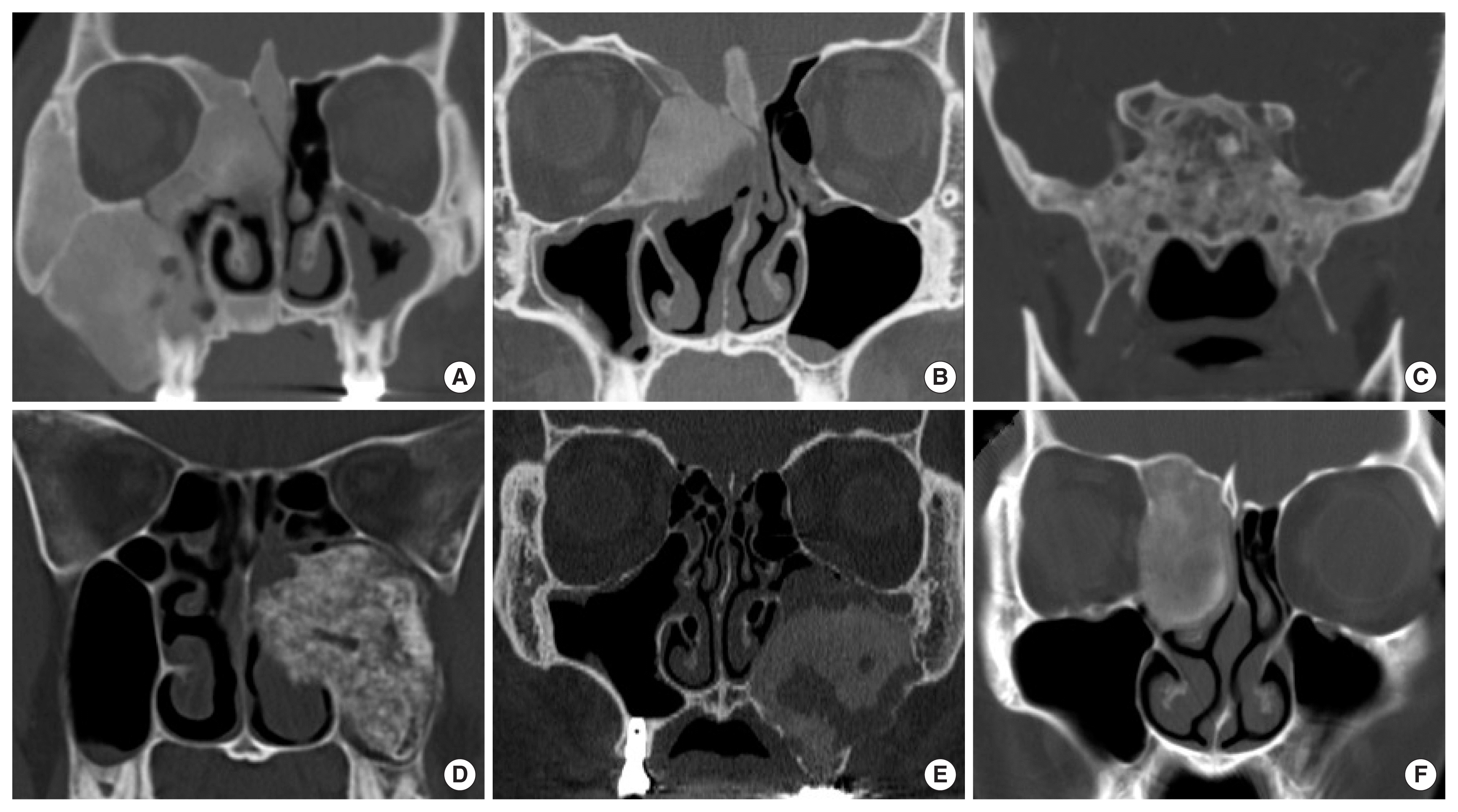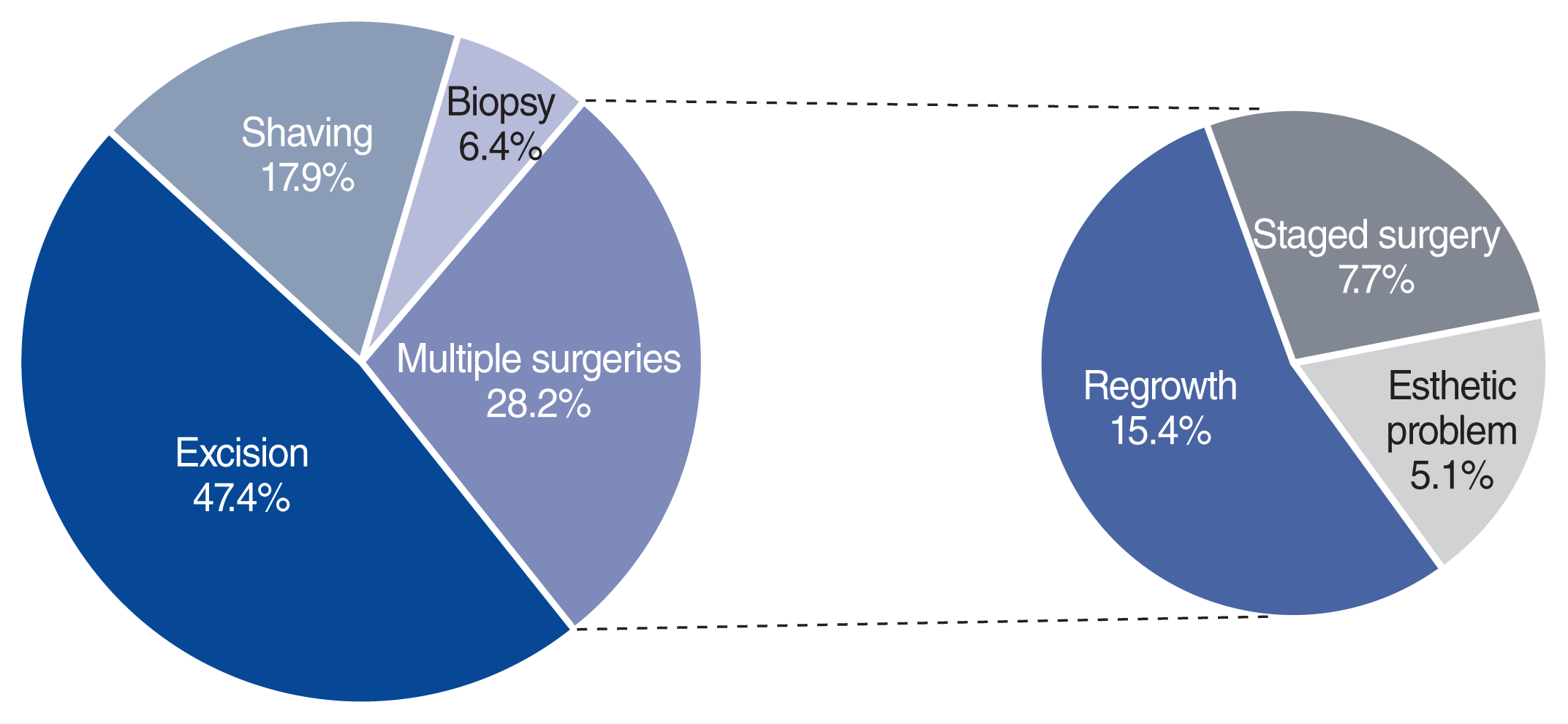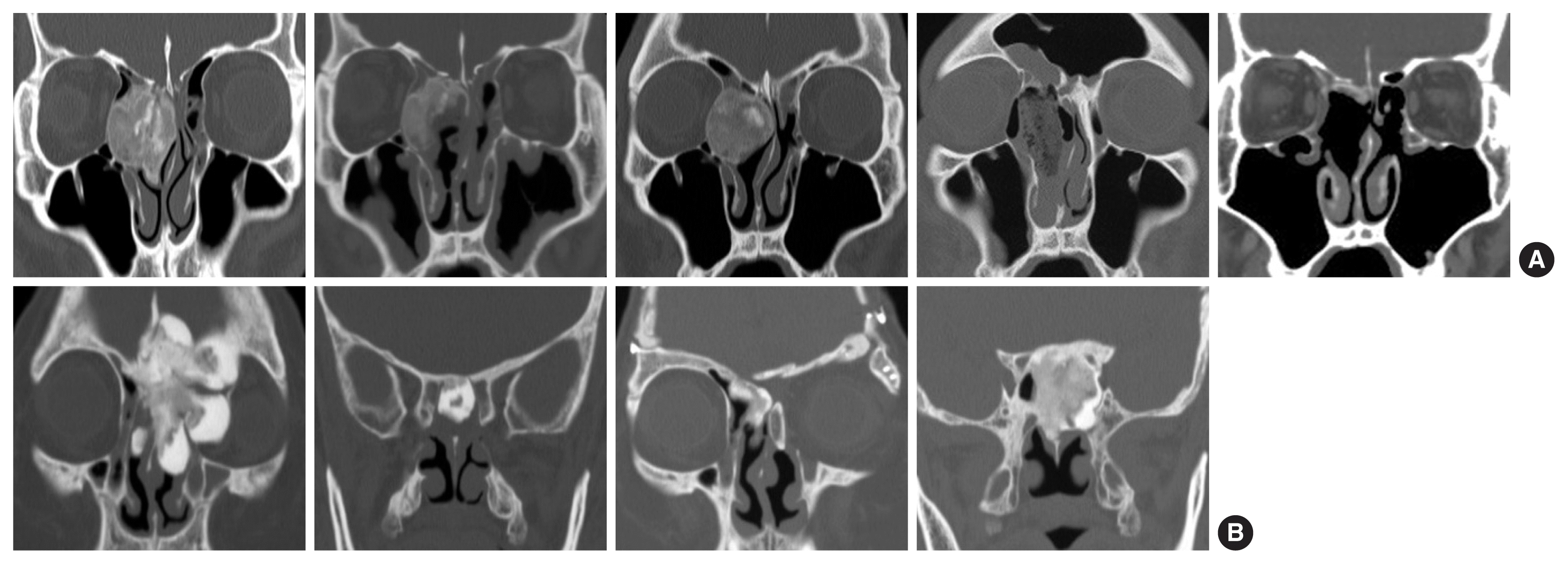1. Waldron CA, Giansanti JS. Benign fibro-osseous lesions of the jaws: a clinical-radiologic-histologic review of sixty-five cases. Oral Surg Oral Med Oral Pathol. 1973; Feb. 35(2):190–201.

2. Eversole R, Su L, ElMofty S. Benign fibro-osseous lesions of the craniofacial complex: a review. Head Neck Pathol. 2008; Sep. 2(3):177–202.

3. El-Mofty SK. Fibro-osseous lesions of the craniofacial skeleton: an update. Head Neck Pathol. 2014; Dec. 8(4):432–44.

4. Godt A, Gulicher D, Kalwitzki M, Krober SM. Dislocation of an upper third molar by an ossifying fibroma: case report. J Craniomaxillofac Surg. 2008; Sep. 36(6):360–4.
5. Nelson BL, Phillips BJ. Benign fibro-osseous lesions of the head and neck. Head Neck Pathol. 2019; Sep. 13(3):466–75.

6. Efune G, Perez CL, Tong L, Rihani J, Batra PS. Paranasal sinus and skull base fibro-osseous lesions: when is biopsy indicated for diagnosis? Int Forum Allergy Rhinol. 2012; Mar–Apr. 2(2):160–5.

7. Zeng HF, Lu JJ, Teng L, Jin XL, Xu JJ, Zhang C, et al. Surgical treatment of craniomaxillofacial fibrous dysplasia: functionally or aesthetically? J Craniofac Surg. 2013; May. 24(3):758–62.
8. Hocaoglu E, Yirgin IK, Aksoy S, Arslan G, Inci E, Cimilli T. Computed tomography imaging findings of craniofacial fibrous dysplasia. J Craniofac Surg. 2014; Jul. 25(4):1175–7.

9. Fadle KN, Hassanein AG, Kasim AK. Orbitocranial fibrous dysplasia: outcome of radical resection and immediate reconstruction with titanium mesh and pericranial flap. J Craniofac Surg. 2016; Nov. 27(8):e719–23.
10. Turin SY, Purnell C, Gosain AK. Fibrous dysplasia and juvenile psammomatoid ossifying fibroma: a case of mistaken identity. Cleft Palate Craniofac J. 2019; Sep. 56(8):1083–8.

11. Veltrini VC, Figueira JA, Santin GC, de Sousa SC, de Araujo NS. Can non-collagenous proteins be employed for the differential diagnosis among fibrous dysplasia, cemento-osseous dysplasia and cemento-ossifying fibroma? Pathol Res Pract. 2019; Jul. 215(7):152450.

12. Liu Y, Wang H, You M, Yang Z, Miao J, Shimizutani K, et al. Ossifying fibromas of the jaw bone: 20 cases. Dentomaxillofac Radiol. 2010; Jan. 39(1):57–63.

13. Wang K, Ma XJ, Hao SY, Du J, Zhang LW, Zhang JT, et al. Skull base juvenile psammomatoid ossifying fibroma: clinical characteristics, treatment, and prognosis. World Neurosurg. 2019; May. 125:e843–8.

14. Liens D, Delmas PD, Meunier PJ. Long-term effects of intravenous pamidronate in fibrous dysplasia of bone. Lancet. 1994; Apr. 343(8903):953–4.

15. Plotkin H, Rauch F, Zeitlin L, Munns C, Travers R, Glorieux FH. Effect of pamidronate treatment in children with polyostotic fibrous dysplasia of bone. J Clin Endocrinol Metab. 2003; Oct. 88(10):4569–75.

16. Duan C, Dai Q, Liu Q, Yu H. Characteristics of sinonasal fibrous dysplasia: experience from a single department. Acta Otolaryngol. 2018; Jan. 138(1):50–5.

17. Ciniglio Appiani M, Verillaud B, Bresson D, Sauvaget E, Blancal JP, Guichard JP, et al. Ossifying fibromas of the paranasal sinuses: diagnosis and management. Acta Otorhinolaryngol Ital. 2015; Oct. 35(5):355–61.
18. Ramsey HE, Strong EW, Frazell EL. Fibrous dysplasia of the craniofacial bones. Am J Surg. 1968; Oct. 116(4):542–7.

19. Zenn MR, Zuniga J. Treatment of fibrous dysplasia of the mandible with radical excision and immediate reconstruction: case report. J Craniofac Surg. 2001; May. 12(3):259–63.

20. Lee JS, FitzGibbon E, Butman JA, Dufresne CR, Kushner H, Wientroub S, et al. Normal vision despite narrowing of the optic canal in fibrous dysplasia. N Engl J Med. 2002; Nov. 347(21):1670–6.

21. Cutler CM, Lee JS, Butman JA, FitzGibbon EJ, Kelly MH, Brillante BA, et al. Long-term outcome of optic nerve encasement and optic nerve decompression in patients with fibrous dysplasia: risk factors for blindness and safety of observation. Neurosurgery. 2006; Nov. 59(5):1011–7.




 PDF
PDF Citation
Citation Print
Print








 XML Download
XML Download